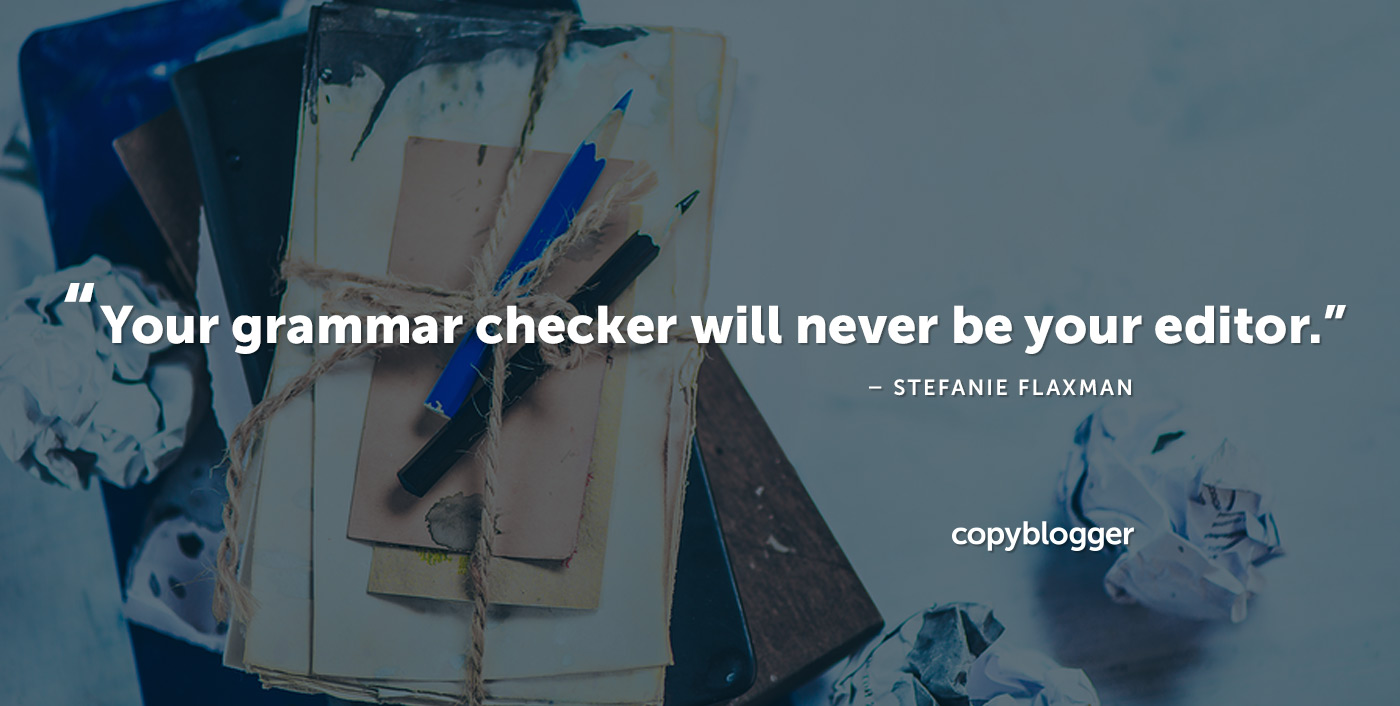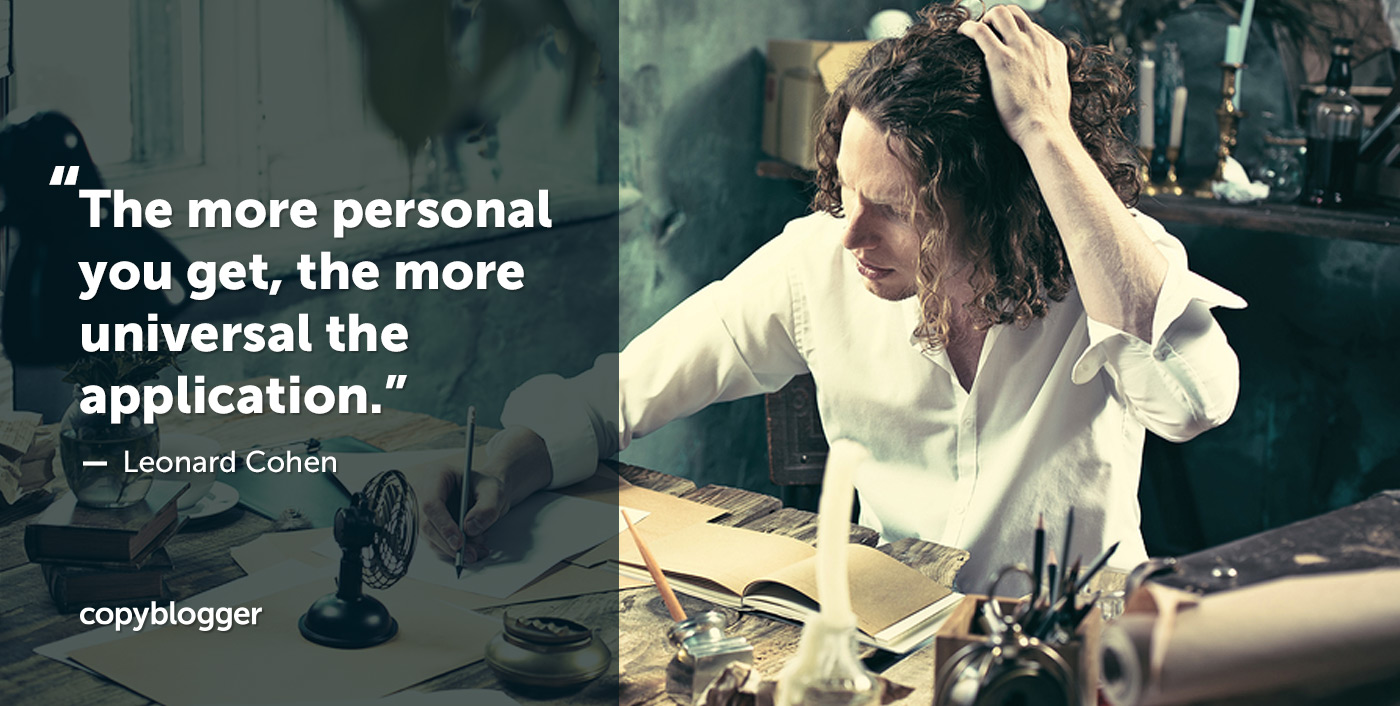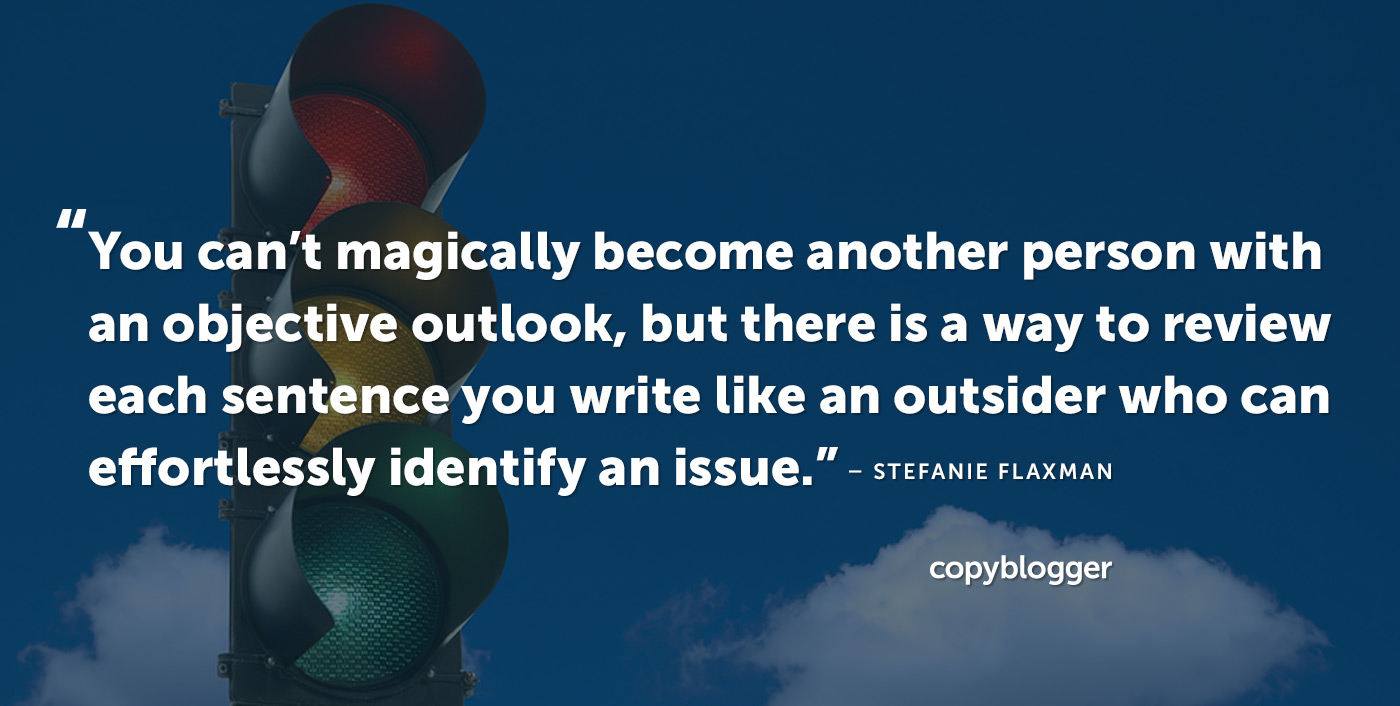

The Art of Creative Self-Editing: From Basic to Brilliant Content
Table of Contents
That’s what Brian was getting at when he wrote:
“It’s no secret we’re partial to writers and other types of content creators around here. That’s because it’s the creators who provide the engine for traffic, funnels, and conversion in the first place.
We’re not talking about any ol’ content that just fills a web page. Instead, we need to create valuable messages that engage, inspire, and motivate our prospects to become who they want to be.
In other words, a healthy dose of creativity that transcends marketing and becomes something more.” – Brian Clark
When a company fails to stand out, its marketing has a certain something less-ness going on. Its products or services blend in with all of the similar-looking options available.
This has nothing to do with the actual quality of a product or service. It’s how prospects perceive the offer.
Creative self-editing 101
A “good idea” usually isn’t enough.
A good idea might fall flat when executed, or you could find out that the idea wasn’t all that great to begin with.
Similarly — and this is good news for anyone who feels pressure to have brilliant ideas on command — a mediocre idea can be developed into extraordinary marketing with the right care and attention.
You give an idea that care and attention while you edit your content.
So, I’ve simplified the creative self-editing process into five steps. And I don’t think I’ve oversimplified how much effort these steps take, because each one has many layers.
Average content is always the result of rushing an idea to completion, which leads us to Step #1.
Self-editing Step #1: Leave enough time
This is the foundation for all of the other tips in this post, as well as the other 150+ articles I’ve written for Copyblogger.
It all comes back to leaving enough time for your ideas to mature and shine.
Creative self-editing, just like writing, needs to be done in stages. We need to prepare for distractions, because creativity is distracting.
Besides unanticipated interruptions during our work sessions, there are typical creative circumstances that we can anticipate.
I always get new ideas when I’m in work mode. Always. And most of the time they don’t fit into the article I’m currently writing or editing.
Nonetheless, I need to stop what I’m doing and explore my thoughts a bit, so I have something substantial to revisit when I’m ready to use that topic.
Just like you shouldn’t expect brilliant writing to pour out of you all at once, you shouldn’t expect one sole editing session to be transformative.
Self-editing Step #2: Have fun
Having fun is an underutilized editing tool.
But you only have time to take breaks during your editorial review if you … leave enough time to have fun.
You’ve probably heard of the 24-hour rule for better writing. Essentially, after you finish writing a draft, you wait 24 hours before you edit it. This way, you’ll have fresh eyes and catch more mistakes.
You can use the 24-hour rule within your creative self-editing process as well — it’s not just for catching mistakes.
Taking breaks to do something fun, unrelated to your writing and editing, gives you space to make new connections that add depth and nuance to rough ideas.
It may sound counterintuitive, but many important messages for your audience will emerge when you’re not concerned about writing an important message.
Self-editing Step #3: Craft precise headlines
I read a ton of headlines every day. I read very few articles.
Two things are happening here. A headline either:
- Gives me all of the information that I wanted to know, or
- Lacks the persuasive details that spark my interest
Let’s look at the second case.
Your headline needs to convince a reader that the rest of your article is worth their time.
You do that with precise language that speaks directly to a specific person. Headlines that appeal to “everyone” will actually appeal to no one.
Draft a headline before you write your content to help you stay focused on your main point.
Once you’ve completed the final draft of your content, you’ll write many different headline options. The winner will sell your prospective reader on that article.
Ask yourself:
- Who will benefit from this content?
- How do I help them?
- What makes this content special?
The answers to these questions most likely won’t produce the exact words you’ll use.
Rather, they’ll help shape your draft into an influential headline that reaches and connects with the people you want to attract to your content.
Self-editing Step #4: Build powerful sentences
Some people think “clarity” and “creativity” can’t co-exist.
The trick is getting the order correct:
- Creativity
- Clarity
- Creativity
I didn’t accidentally duplicate the word “Creativity” above. When you follow that order, the result is accurate and meaningful sentences that resonate with your target audience.
For your first draft, you have to minimize any self-imposed pressure to be a good writer. When you aren’t concerned about getting everything in the right order, you translate creative concepts from your mind more freely.
I rarely write an article from the beginning to the end. This gives me the opportunity to naturally follow the thoughts I have.
Then it’s time to get clear. I rearrange sections of my writing to the appropriate order — while expanding incomplete paragraphs and deleting tangents.
In your final draft, creatively choose the right words that make up memorable sentences.
Speaking of the right words …
Self-editing Step #5: Search for the perfect words
Your search for the perfect words is an ongoing part of the creative self-editing process.
If you look at a piece of your content a year after it has published, you’ll likely find a word that you’d like to replace with a more evocative option — even if you meticulously crafted your writing the first time around.
Here’s where to start this journey.
Repeated words
Look for words that you’ve repeated multiple times and find synonyms for certain instances.
In a draft of the introduction to Succeed as a Professional Writer by Practicing Disciplined Creativity, I noticed I used the word “magically,” and then the word “magic” a few paragraphs later.
I strengthened that section of the article by changing the second instance of “magic” to “sorcery.”
Vague concepts
A word you’ve jotted down quickly to convey a general idea can often be refined.
For example, I recently used the word “woo-woo” in a draft, but edited it to “idealistic.”
The more specific word choice reinforces the clarity and creativity I mentioned in Self-Editing Step #4. The change allowed the reader to more effortlessly understand my intention.
Incorrect usage
Editors double-check the definition of a word when they aren’t 100% sure it is used correctly.
Last week, I was 99% sure I used the right version of the word “bore,” but since I knew that word is commonly confused with “boar” and “boor,” I looked up the definition anyway.
This is not just a tedious task that’s necessary to avoid unintentional errors. It’s creative.
The more intimately you get to know each word in your content, the more confident you can be that you’re choosing the words that make an imprint in your reader’s mind. The words that give them something more.
Share this post
Share on facebook
Share on twitter
Share on linkedin
Join The Conversation
Top posts




Start with Your
you may also like
9 Books Every Content Marketer Should Read
9 Books Every Content Marketer Should Read
Making a Business Out of Her Life
Making a Business Out of Her Life
Authority Content: Build an Audience that Builds Your Business
Authority Content: Build an Audience that Builds Your Business
Subscribe
Litch+
Menu
Create
Menu
Create More...
Menu



















